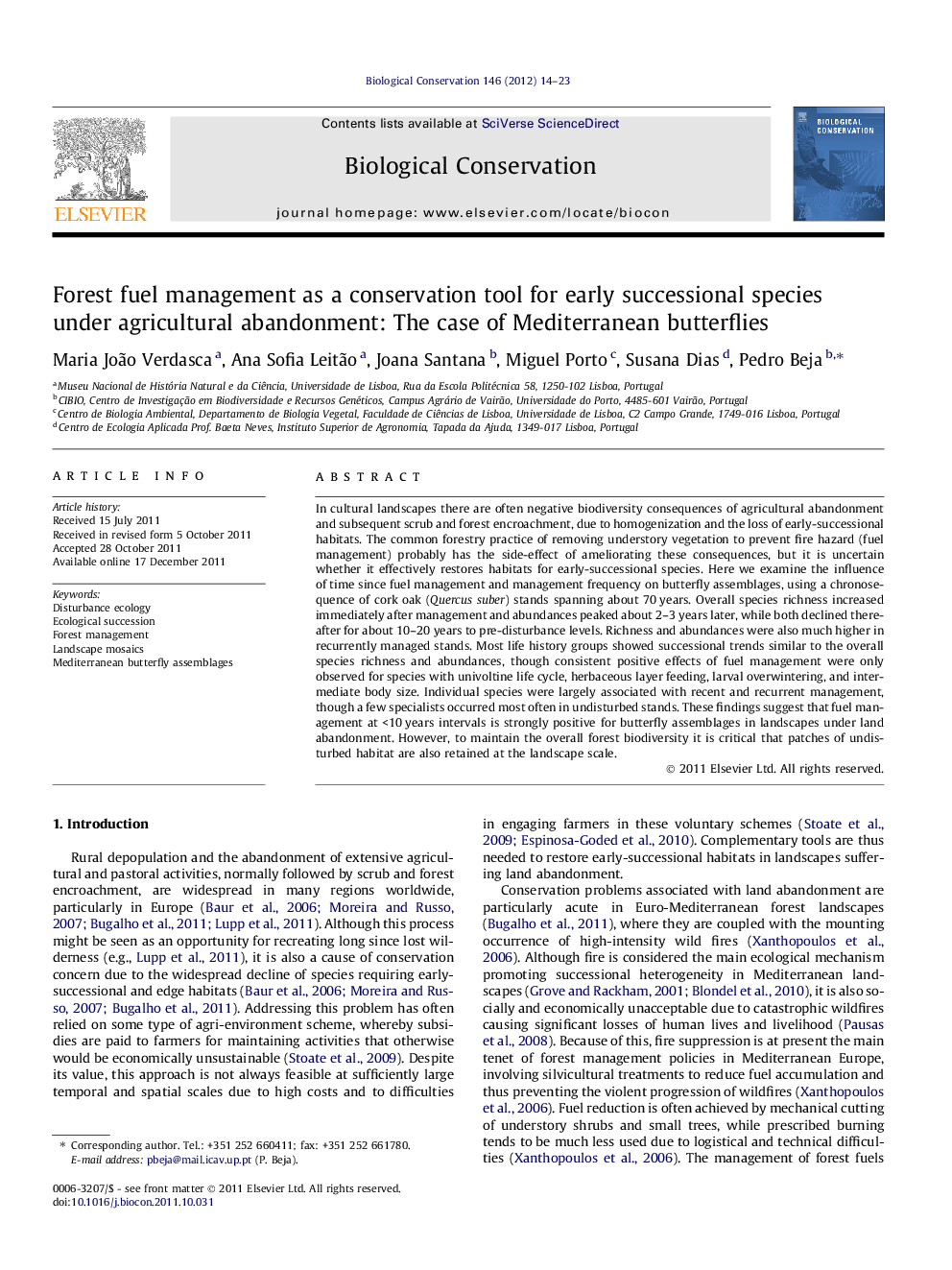| Article ID | Journal | Published Year | Pages | File Type |
|---|---|---|---|---|
| 4385461 | Biological Conservation | 2012 | 10 Pages |
In cultural landscapes there are often negative biodiversity consequences of agricultural abandonment and subsequent scrub and forest encroachment, due to homogenization and the loss of early-successional habitats. The common forestry practice of removing understory vegetation to prevent fire hazard (fuel management) probably has the side-effect of ameliorating these consequences, but it is uncertain whether it effectively restores habitats for early-successional species. Here we examine the influence of time since fuel management and management frequency on butterfly assemblages, using a chronosequence of cork oak (Quercus suber) stands spanning about 70 years. Overall species richness increased immediately after management and abundances peaked about 2–3 years later, while both declined thereafter for about 10–20 years to pre-disturbance levels. Richness and abundances were also much higher in recurrently managed stands. Most life history groups showed successional trends similar to the overall species richness and abundances, though consistent positive effects of fuel management were only observed for species with univoltine life cycle, herbaceous layer feeding, larval overwintering, and intermediate body size. Individual species were largely associated with recent and recurrent management, though a few specialists occurred most often in undisturbed stands. These findings suggest that fuel management at <10 years intervals is strongly positive for butterfly assemblages in landscapes under land abandonment. However, to maintain the overall forest biodiversity it is critical that patches of undisturbed habitat are also retained at the landscape scale.
► Butterfly species richness and abundance peaked shortly after fuel management. ► Richness and abundances were also much higher in recurrently managed stands. ► Most life history groups responded positively to management. ► Only a few specialist species occurred most often in undisturbed stands. ► Fuel management helps restoring butterfly diversity under land abandonment.
